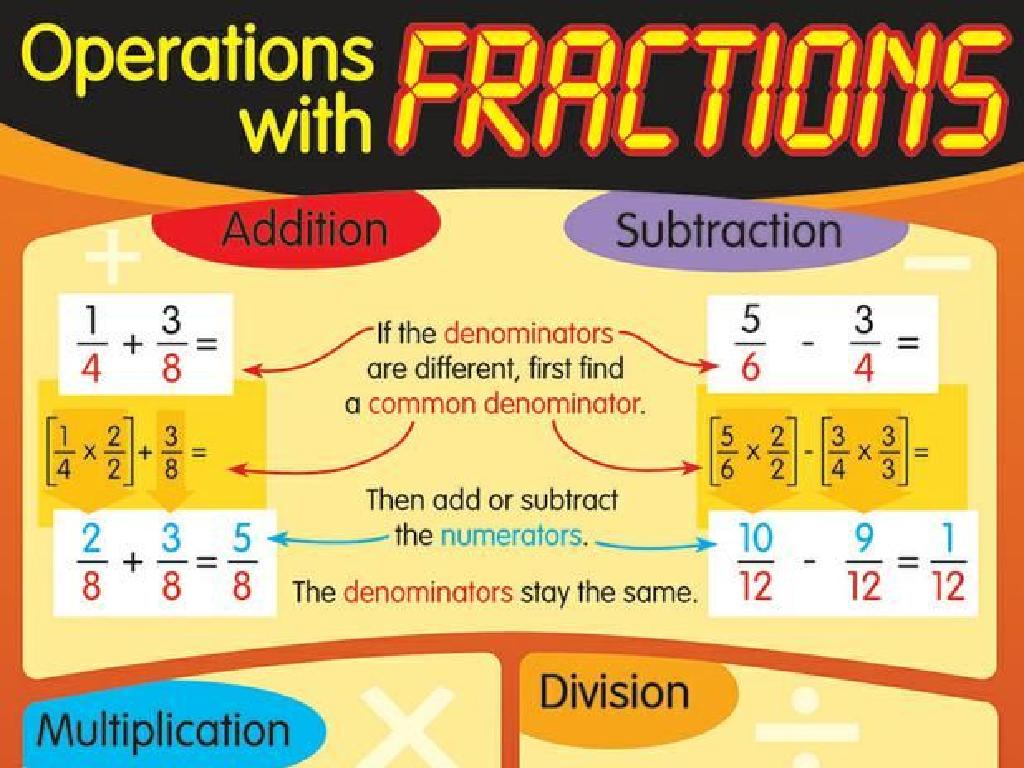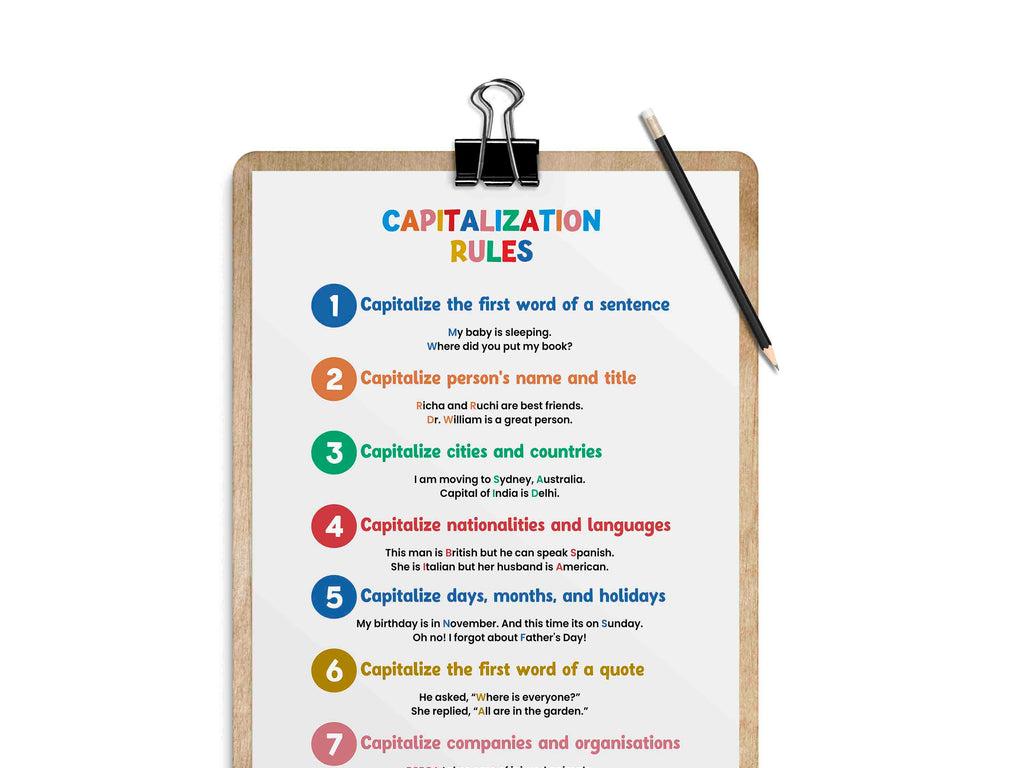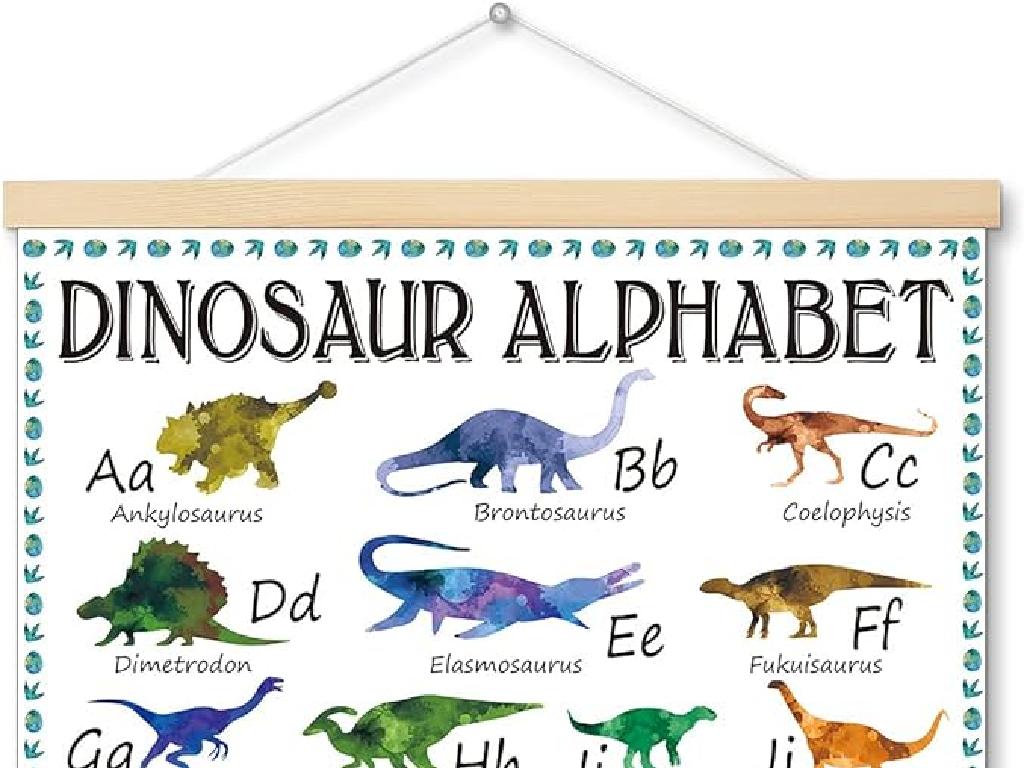Counting Principle
Subject: Math
Grade: Eighth grade
Topic: Probability
Please LOG IN to download the presentation. Access is available to registered users only.
View More Content
Exploring the Counting Principle
– Grasp basic probability concepts
– Probability measures the likelihood of an event
– Probability’s role in decisions
– It helps us make informed choices based on outcomes
– Introduction to the Counting Principle
– A method to determine the number of possible outcomes
– Counting Principle application
– Use it to solve real-world problems
|
This slide introduces the concept of probability and its practical applications in decision-making. Begin with a discussion on the basics of probability, ensuring students understand it as a measure of how likely an event is to occur. Highlight how probability is used in everyday decisions, from weather forecasts to medical diagnoses. Introduce the Counting Principle as a fundamental concept in determining the total number of possible outcomes in a given situation. Emphasize its importance in solving complex problems by breaking them down into simpler, more manageable parts. Provide examples such as calculating the number of outfit combinations from different clothing items or the number of ways to arrange books on a shelf. Encourage students to think of other scenarios where the Counting Principle can be applied.
Exploring Probability
– Define probability concept
– Probability measures the likelihood of an event to occur.
– Probability in daily life
– Common in games, weather forecasts, and risk assessment.
– Real-world probability examples
– Flipping a coin, rolling dice, and predicting rain.
– Understanding probability
|
This slide introduces the concept of probability, which is a measure of how likely an event is to occur. It’s a fundamental concept in mathematics and is applied in various everyday situations. Students should understand that probability is everywhere from simple games like flipping a coin or rolling dice to more complex predictions like weather forecasting or assessing risks. Provide examples that are relatable to the students’ experiences to help them grasp the concept. Encourage them to think of other examples where probability plays a role in their daily lives. The goal is to build a foundational understanding of probability before delving into more complex topics like the counting principle.
Understanding the Counting Principle
– Define the Counting Principle
A method to count the number of possible outcomes in a sequence of events.
– Learn the Counting Formula
Total Outcomes = Choices for Event 1 x Choices for Event 2 x … x Choices for Event N.
– Explore importance in Probability
It helps determine the likelihood of various outcomes without listing them all.
– Apply to real-world scenarios
Useful in predicting outcomes in games, genetics, and everyday decisions.
|
The Counting Principle is a fundamental concept in probability that allows us to calculate the total number of possible outcomes for a series of events. By understanding and applying the formula, students can solve complex probability problems efficiently. Emphasize the significance of this principle in various probability scenarios and encourage students to think of situations where they could apply this principle, such as determining the number of outfit combinations from different clothing options or the number of different ways to arrange a set of books on a shelf.
Applying the Counting Principle
– Example: Choosing an Outfit
– Calculate combinations for shirt, pants, shoes
– Example: Picking a Meal Combo
– Selecting a main, side, and drink
– Complex Scenarios Application
– Use for multiple events and choices
– Counting Principle Formula
|
This slide aims to demonstrate the practical application of the counting principle through relatable examples. Start with a simple scenario like choosing an outfit, where students can calculate the total number of combinations using the counting principle. Move on to a meal combo example, where they pick a main dish, a side, and a drink. Emphasize that the counting principle allows us to find the number of possible outcomes when faced with a series of choices. For more complex scenarios, guide students on how to extend the principle to multiple events and choices. Introduce the formula for the counting principle: If one event can occur in ‘m’ ways and a second event can occur independently in ‘n’ ways, then the two events can occur in ‘m x n’ ways. Encourage students to come up with their own examples and apply the formula to calculate the total number of possible outcomes.
Counting Principle in Action: Class Activity
– Create your own scenarios
– Work in groups to apply principles
– Use different scenarios to explore outcomes
– Share findings with the class
– Discuss how you used the Counting Principle
– Reflect on the learning process
– Think about what was surprising or challenging
|
This slide introduces a class activity focused on the Counting Principle. Students will be tasked with creating their own scenarios where they can apply the Counting Principle to determine the number of possible outcomes. They will work in groups to encourage collaboration and discussion, which will help deepen their understanding of the concept. Afterward, each group will share their scenarios and findings with the class, providing an opportunity for peer learning. The teacher should facilitate the activity by providing guidance and ensuring each group understands the principle. Possible scenarios could include creating a menu of options for a meal, different outfits from a selection of clothing, or various routes to get to a destination. The reflection part of the activity will help students internalize the concept and recognize its application in real-life situations.
Challenging Problems: Counting Principle
– Tournament outcome possibilities
– How many ways can a team finish 1st, 2nd, or 3rd in a tournament?
– Possible club member combinations
– How many different groups can be formed from class members for clubs?
– Steps for solving counting problems
– Guided practice session
– We’ll work through examples together to understand the process.
|
This slide introduces students to complex applications of the counting principle through two challenging problems. The first problem involves calculating the number of possible outcomes in a tournament setting, which can be solved by considering the arrangements of teams in winning positions. The second problem encourages students to explore the combinations of club members from a given set, a practical use of the counting principle in organizing groups. After presenting the problems, the slide transitions to a guided practice where students will be led through the steps to solve similar types of problems. This practice will reinforce their understanding and application of the counting principle in various scenarios.
Review and Reflect: Counting Principle
– Recap of the Counting Principle
– The fundamental rule to count possible outcomes in a scenario
– Application in today’s lesson
– Examples from class: outfit combinations, menu choices
– Addressing questions
– Clarifying doubts
|
This slide aims to consolidate the students’ understanding of the Counting Principle by revisiting the concept and its applications discussed in today’s lesson. Begin with a brief recap, explaining that the Counting Principle allows us to calculate the total number of possible outcomes for a series of events. Reflect on how this principle was applied in class through practical examples such as determining the number of different outfits that can be made from a set of clothing items or the number of meal combinations from a menu. Encourage students to ask questions about any part of the lesson they found challenging and offer clarifications to ensure a solid grasp of the concept. This interactive session will help reinforce their learning and address any lingering uncertainties.
Class Activity: Probability Fair
– Design a probability game
– Use Counting Principle for prediction
– How many outcomes can you get? Use the Counting Principle to find out.
– Present game to the class
– Explain your game’s probability
– Share how likely each outcome is, based on your game design.
|
In this engaging class activity, students will apply their knowledge of the Counting Principle to create their own probability-based game. They should consider all possible outcomes and use the Counting Principle to determine the likelihood of each. Once the games are created, students will present them to the class, explaining how probability is used and how the Counting Principle helped them predict different outcomes. For the teacher: Provide guidance on game design, ensure the Counting Principle is correctly applied, and prepare to facilitate discussions on probability. Suggested activities could include a dice game, a card draw, or a spinner. Encourage creativity and critical thinking as students explain the math behind their games.
Homework: Mastering the Counting Principle
– Complete practice problems
– Solve assigned problems to understand the counting principle better.
– Create a real-world scenario
– Think of a situation where multiple choices lead to different outcomes.
– Reflect on probability in decisions
– How does understanding probability influence everyday choices?
– Share insights next class
|
This homework assignment is designed to reinforce the concepts learned about the counting principle. Students should complete the practice problems to solidify their understanding. Encouraging them to create a real-world scenario where the counting principle applies will help them see the practical applications of probability. They should also reflect on how probability plays a role in decision-making processes, such as in risk assessment or planning events. In the next class, students will have the opportunity to share their scenarios and reflections, promoting a deeper understanding of the material through discussion.






